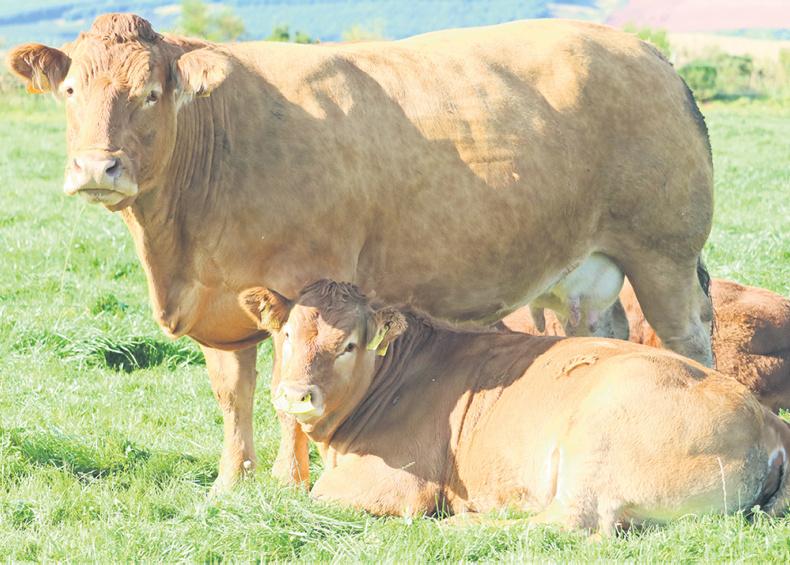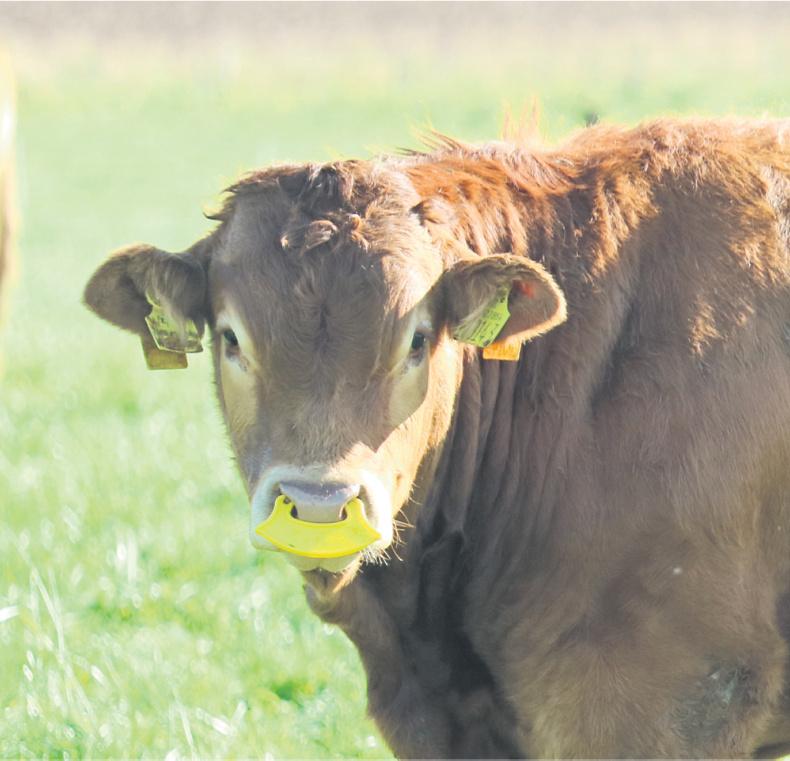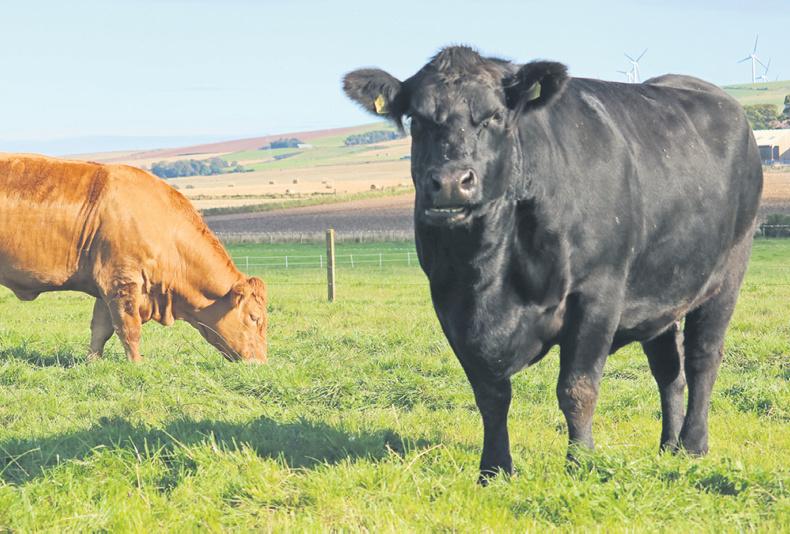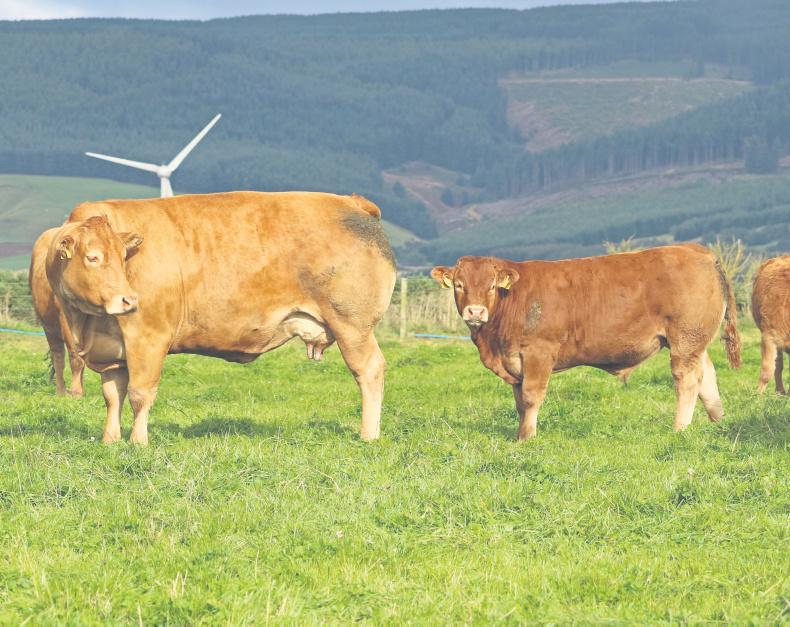Weaning commenced on the farm last week. This year we are trying the QuietWean calf nose plates. We brought the cows and calves in last week and ran them through the race. One downside people see to the QuietWeans is an extra handling of the cattle. However, we had to bring them in for their first IBR vaccine anyway so it was no extra work really.
We wanted to minimise the amount of stress the calves experience around weaning as it can have a serious effect on growth rates at this time. Any check in performance is a cost to the business so anything we can do to reduce this will help.
Ideally we had planned to leave the cows in a paddock they had been in all week and allow the calves to forward-creep graze using two horse electric posts to raise the wire between the two paddocks. This way the cows wouldn’t be on the best of grazing and it would help them to dry off, while the calves would have access to the best grass and creep feed. Unfortunately, the weather was so bad that they had started to damage the last paddock so we had to move them all on to the next one.

There have been no signs of mastitis in the cows thankfully and we’re hoping we won’t have any trouble going forward. The cows are in great condition which we were keen to keep on their backs coming into the winter period. This can be mobilised during the winter months and will reduce feed costs significantly compared to bringing in thin cows that need to gain condition on the run up to calving.
The plan for the dry cows is to go on an ammonia-treated straw diet from housing, with a little liquid feed to balance energy levels, up until a month or six weeks pre-calving when we will introduce some silage to the diet. With this in mind, we tube-line wrapped and treated just over 100t of straw for feeding about a month ago.
 Walking through the cows and calves the first few days after the plates were fitted I was amazed at how relaxed the calves were. I saw a couple of calves trying to suck cows but, after a few failed attempts, they gave up and went grazing instead. In fact it was actually the cows that were more restless than the calves.
Walking through the cows and calves the first few days after the plates were fitted I was amazed at how relaxed the calves were. I saw a couple of calves trying to suck cows but, after a few failed attempts, they gave up and went grazing instead. In fact it was actually the cows that were more restless than the calves.
There were three later-born (April) heifer calves that we are not going to wean just yet to give them a chance to grow on. Their mothers are still milking quite well at the moment. They will be weaned in a month’s time.

As always, any time the cattle go through the race we take a weight measurement on them (Table 1). We really got a nice surprise when we started reading the weights. The bull calves are now 398kg on average while the heifers are a very respectable 340kg. The last weight was in late July just before the creep feeders went out.
From then until now, the bulls have gained 1.83kg/day and the heifers 1.49kg/day. It’s interesting to compare these to lifetime gains which are 1.75kg/day for the bulls and 1.54kg/day for the heifers. From this it tells me the timing of the creep feeder going out was spot on as growth rate has been maintained into the second half of the season when it often suffers.
Grass
This year we blanket spread 35kg/ha of nitrogen across most of the grazing ground at the end of August. This is later than we would usually spread fertiliser as we didn’t think we would get the growth response late in the season. However, grass growth has kicked on significantly and hopefully we have enough grass on-farm to keep at least some stock out until mid-October.
On the rotationally grazed ground we will get one more quick rotation across the five paddocks. This will probably be done with lighter stock to minimise damage to ground. Once weaned, we will hold out the heifer calves to graze the grass along with a batch of 20 recipient heifers that will be lighter on the ground. The weanling bulls will come into the shed and be fed the first cut silage.
Scanning

We plan to scan in about three weeks’ time. Calving spread is something we are working on here so we planned a 12-week breeding period for the spring herd this year. We had such bad luck with bulls towards the end of the breeding season. One of the Limousin bulls injured himself when he slipped off a cow while serving her and had to be put down as a result. Another bull went lame around the same time so it left us with just the Angus bull working.
We removed the bull at 12 weeks, however, we noticed five cows bulling in the first few days after he was removed. It was decided to let the Angus bull in for one more week to try and minimise the number of empty cows.
It’s difficult when you are trying to build up numbers to be as ruthless as you would like. Hopefully the scan results will be favourable and the Angus bull should have a short gestation so calving spread won’t be affected too much next year.
Read more
Silage quality: what a difference a year makes!
Weaning commenced on the farm last week. This year we are trying the QuietWean calf nose plates. We brought the cows and calves in last week and ran them through the race. One downside people see to the QuietWeans is an extra handling of the cattle. However, we had to bring them in for their first IBR vaccine anyway so it was no extra work really.
We wanted to minimise the amount of stress the calves experience around weaning as it can have a serious effect on growth rates at this time. Any check in performance is a cost to the business so anything we can do to reduce this will help.
Ideally we had planned to leave the cows in a paddock they had been in all week and allow the calves to forward-creep graze using two horse electric posts to raise the wire between the two paddocks. This way the cows wouldn’t be on the best of grazing and it would help them to dry off, while the calves would have access to the best grass and creep feed. Unfortunately, the weather was so bad that they had started to damage the last paddock so we had to move them all on to the next one.

There have been no signs of mastitis in the cows thankfully and we’re hoping we won’t have any trouble going forward. The cows are in great condition which we were keen to keep on their backs coming into the winter period. This can be mobilised during the winter months and will reduce feed costs significantly compared to bringing in thin cows that need to gain condition on the run up to calving.
The plan for the dry cows is to go on an ammonia-treated straw diet from housing, with a little liquid feed to balance energy levels, up until a month or six weeks pre-calving when we will introduce some silage to the diet. With this in mind, we tube-line wrapped and treated just over 100t of straw for feeding about a month ago.
 Walking through the cows and calves the first few days after the plates were fitted I was amazed at how relaxed the calves were. I saw a couple of calves trying to suck cows but, after a few failed attempts, they gave up and went grazing instead. In fact it was actually the cows that were more restless than the calves.
Walking through the cows and calves the first few days after the plates were fitted I was amazed at how relaxed the calves were. I saw a couple of calves trying to suck cows but, after a few failed attempts, they gave up and went grazing instead. In fact it was actually the cows that were more restless than the calves.
There were three later-born (April) heifer calves that we are not going to wean just yet to give them a chance to grow on. Their mothers are still milking quite well at the moment. They will be weaned in a month’s time.

As always, any time the cattle go through the race we take a weight measurement on them (Table 1). We really got a nice surprise when we started reading the weights. The bull calves are now 398kg on average while the heifers are a very respectable 340kg. The last weight was in late July just before the creep feeders went out.
From then until now, the bulls have gained 1.83kg/day and the heifers 1.49kg/day. It’s interesting to compare these to lifetime gains which are 1.75kg/day for the bulls and 1.54kg/day for the heifers. From this it tells me the timing of the creep feeder going out was spot on as growth rate has been maintained into the second half of the season when it often suffers.
Grass
This year we blanket spread 35kg/ha of nitrogen across most of the grazing ground at the end of August. This is later than we would usually spread fertiliser as we didn’t think we would get the growth response late in the season. However, grass growth has kicked on significantly and hopefully we have enough grass on-farm to keep at least some stock out until mid-October.
On the rotationally grazed ground we will get one more quick rotation across the five paddocks. This will probably be done with lighter stock to minimise damage to ground. Once weaned, we will hold out the heifer calves to graze the grass along with a batch of 20 recipient heifers that will be lighter on the ground. The weanling bulls will come into the shed and be fed the first cut silage.
Scanning

We plan to scan in about three weeks’ time. Calving spread is something we are working on here so we planned a 12-week breeding period for the spring herd this year. We had such bad luck with bulls towards the end of the breeding season. One of the Limousin bulls injured himself when he slipped off a cow while serving her and had to be put down as a result. Another bull went lame around the same time so it left us with just the Angus bull working.
We removed the bull at 12 weeks, however, we noticed five cows bulling in the first few days after he was removed. It was decided to let the Angus bull in for one more week to try and minimise the number of empty cows.
It’s difficult when you are trying to build up numbers to be as ruthless as you would like. Hopefully the scan results will be favourable and the Angus bull should have a short gestation so calving spread won’t be affected too much next year.
Read more
Silage quality: what a difference a year makes!

 Walking through the cows and calves the first few days after the plates were fitted I was amazed at how relaxed the calves were. I saw a couple of calves trying to suck cows but, after a few failed attempts, they gave up and went grazing instead. In fact it was actually the cows that were more restless than the calves.
Walking through the cows and calves the first few days after the plates were fitted I was amazed at how relaxed the calves were. I saw a couple of calves trying to suck cows but, after a few failed attempts, they gave up and went grazing instead. In fact it was actually the cows that were more restless than the calves. 







 This is a subscriber-only article
This is a subscriber-only article















SHARING OPTIONS: